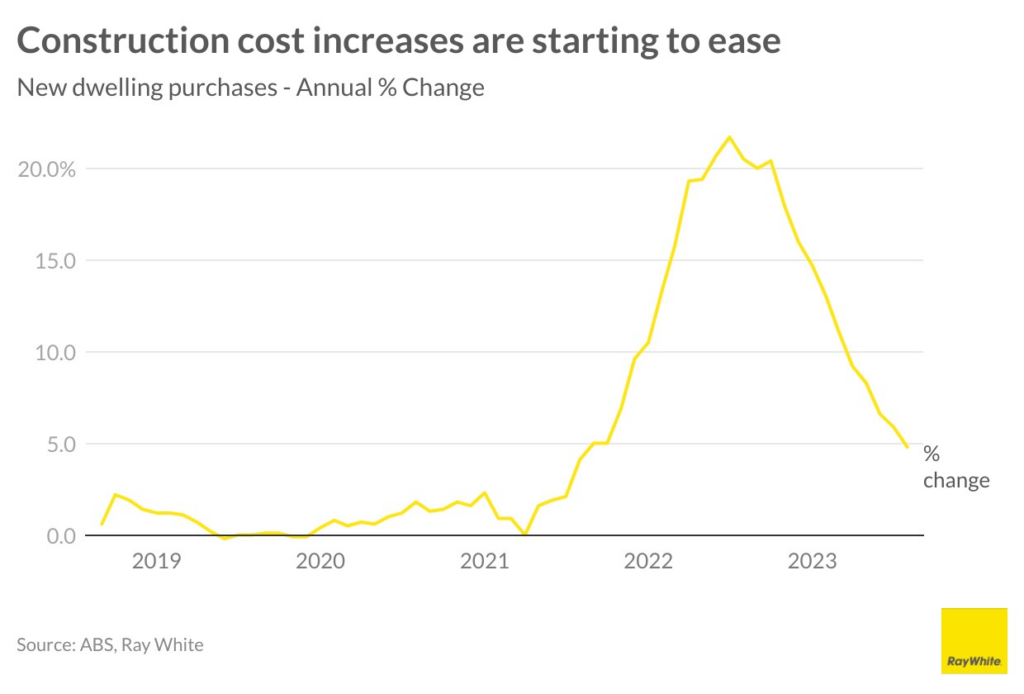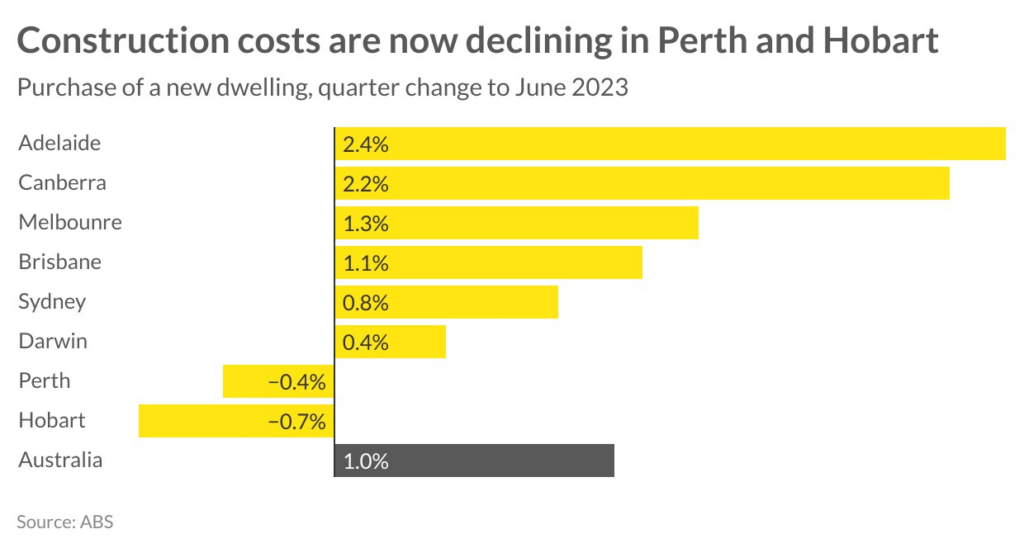Anyone who has recently built a house or completed a renovation will know first-hand the exorbitant rise in construction costs due to post-pandemic supply chain issues and labour shortages. This building cost spiral has also sent builders who had fixed price contracts in place before the upheavals, broke.
The cost increases have been a major driver in our inflation rate, and therefore a major reason for the recent rise in interest rates.
Construction cost increases peaked in July 2022, rising by 21 per cent over the 12-month period. In Brisbane, the most impacted city, the increase exceeded 30 per cent.
Rising construction costs and builders going broke are major reasons why we have a housing shortage, which is subsequently pushing up property values and causing the rental crisis. Last year, Australia’s population increased by 500,000 people, requiring around 200,000 additional homes. Only 172,000 were built.
But, according to Ray White real estate chief economist, Nerida Conisbee, it looks like construction costs are finally starting to ease. So much so that in Perth and Hobart, construction costs are actually declining.
Cost issues are being resolved
According to Nerida, there were a number of factors that have driven construction costs and lowered the number of homes built. Many of these are now resolved or will be over the next six months.
The building cost spiral started with supply chain blockages. Shipping costs skyrocketed post-pandemic and the cost of building materials increased as a result. However, cost increases weren’t the only challenge. It also became slower to get building materials and this impacted productivity. It then became slower to build as projects were delayed by a lack of materials. These supply chains are now moving smoothly again.
The cost of materials also increased because we weren’t the only ones starting to build again post-pandemic. The cost of many raw materials skyrocketed as a result of increasing demand worldwide.
Labour shortages taking longer to fix
Labour shortages have also been problematic and this is taking longer to fix. Higher migration is helping, but also putting more pressure on housing demand. Competition from other building projects has also meant that demand for trades is coming from a wide range of sources.


Brisbane, where costs have skyrocketed the most, has felt this most significantly. Not only did Brisbane see high interstate migration during the pandemic, which required more homes, it has also been in the midst of a building boom – a new casino, new office buildings, infrastructure construction and rebuilding post-floods. Labour costs are another reason why Brisbane saw the biggest jump in construction costs.
Broke building companies still causing issues
Fewer building companies has also been a problem. As building costs skyrocketed, a large number of building companies became insolvent. Projects were again put on hold or stopped mid-construction. Like labour, it will take some time for this to improve again, with less competition for building expected to keep prices more elevated.


Moderating construction costs are already leading to higher building approvals. Dwelling approvals are still very low but increased by 7 per cent in August. Victoria is leading the way with an increase of 22 per cent. Renovations are also starting up again and the value of alterations and additions approved for homes is now getting close to where it was during the 2021 peak.
Get Kochie’s weekly newsletter delivered straight to your inbox! Follow Your Money & Your Life on Facebook, Twitter and Instagram.
Read this next:
Perspective: How landlord investors have done the heavy lifting on rental property




























Trending
Sorry. No data so far.